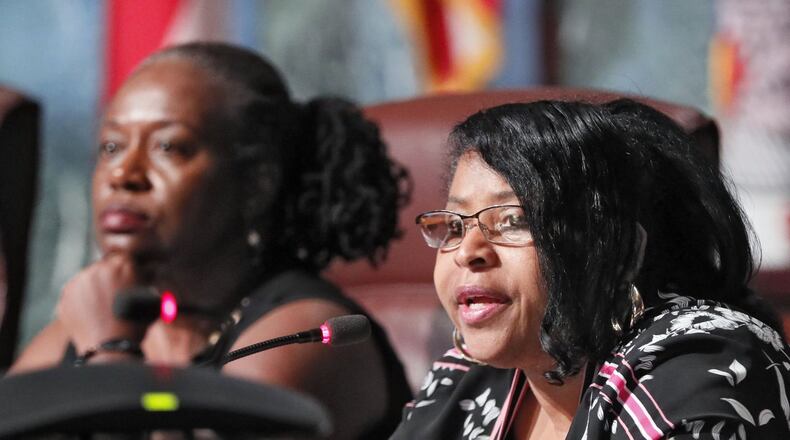A newly released map provides the first look at what could become the new Atlanta City Council district lines for nearly the next decade.
The redistricting process, which occurs every 10 years following the release of the census, is set to affect thousands of Atlantans who will see a change in their representation on the City Council.
The map currently under consideration by the council generally shifts the district lines toward the northeast. That’s because, according to the census, areas on the Eastside and Northside of the city saw disproportionate population increases. Districts on the Southside and in southwest Atlanta grew at a slower rate, remained stagnant or lost residents.
Credit: Courtesy/Atlanta City Council
Credit: Courtesy/Atlanta City Council
Detailed maps of the new districts obtained by The Atlanta Journal-Constitution provide residents with a neighborhood-level look at how the districts could change.
Atlantans will have the ability to weigh in at public hearings over the next several weeks; they have not yet been scheduled.
“It’s time to take it to the public. we’re here now,” said Councilwoman Andrea Boone, who chairs the City Council committee in charge of the redistricting process. “What’s important is that we follow the law.”
The maps have to be redrawn to ensure that each of the council’s 12 districts has the same population, around 41,500 residents. The new map will be used for the 2025 and 2029 nonpartisan city elections, before the 2030 census forces another revision.
The task is especially tricky this time around because the city’s population grew by over 78,000 people between 2010 and 2020. That’s the largest 10-year increase the city has seen since 1960, which was the first census to reflect the annexation of Buckhead into Atlanta.
The Atlanta Planning Advisory Board, a city-created group of neighborhood leaders that provides input on citywide issues, took issue with the fact that the city released the proposed map without any public engagement.
“To date, the council has not held any public information session, work sessions or public hearings where the citizens of Atlanta could learn more about the redistricting process or provide input on proposed plans,” the board wrote in a letter to council.
The council privately considered four different options, but Boone said only one met the requirement of having equal populations in each district. Even then, she said some people on the council weren’t thrilled with the results, since each councilmember has preferences over which neighborhoods they want to represent.
“They have to be equal. Not everybody’s going to be happy,” she said.
Boone said the council will ensure it follows the law and takes public feedback into account as it considers the map. She doesn’t have an estimate on when she hopes the council approves the new district lines.
Unlike the state and county redistricting process, the Georgia Legislature does not have to sign off on the new districts.
About the Author
The Latest
Featured



